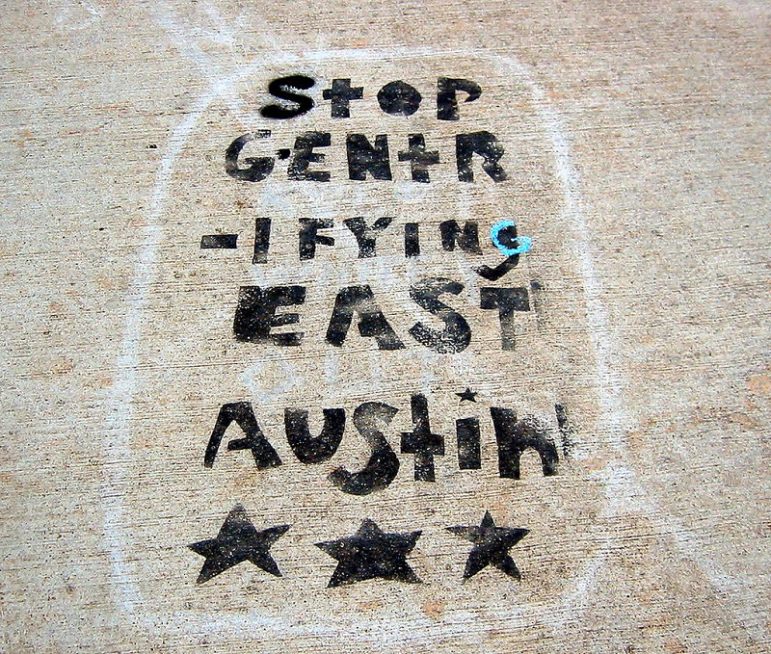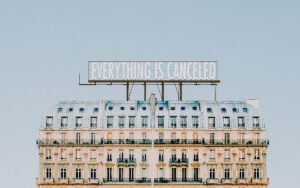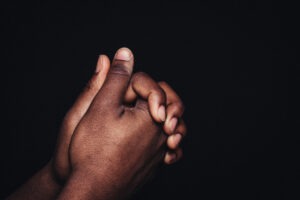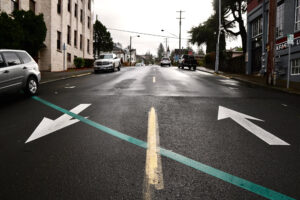
May 25, 2016; Grist
While Austin’s tech industry is booming and its real estate prices are climbing, the city’s African American population is shrinking and moving to the suburbs, according to “Those Who Left,” a recent study published by the Institute for Urban Policy Research and Analysis at the University of Texas at Austin.
The study notes that while Austin is one of the fastest growing cities in the United States, the decline of African-American residents is greater than that of any other fast-growing city.
The study drew upon decennial U.S. census results to show Austin’s rapid decline in African-American residents. Notably, Austin grew by 20.4 percent between 2000 and 2010 and was the third-fastest growing city in a list of 10 total cities including Charlotte, Fort Worth, and Portland, among others. But despite city’s huge growth in general population, its African-American population declined by 5.4 percent, from 64,259 African-American residents to 60,760.
This theme is common among cities that are experiencing rapid gentrification, but why are Austin’s numbers so high? At one time, Austin was one-quarter African American. Now, the percentage is only 8% and is expected to go as low as 5% in the next decade.
“In most cities, you have segregation and gentrification, but they don’t often converge on a single community,” study co-author Eric Tang told the website Fusion. “Austin is unique among large and fast-growing cities in this way.”
The neighborhood of East Austin, which was historically African American, has experienced the highest degree flight of black residents. This is made even more disturbing when you consider that this neighborhood was designated predominantly black by an actual city ordinance in 1928. City leaders adopted a plan that set aside an area east of I-35 to keep blacks separate from whites and Hispanics. And it worked; as the city grew, this area had the highest concentration of black residents. But just as those residents were pushed into this neighborhood by segregation, they are being pushed into the suburbs by the rising costs of living in this now-gentrified neighborhood.
Fifty-six percent of the African Americans interviewed for the study said affordability was the main reason for leaving the city for the suburbs. The second-biggest reason, cited by 24 percent of respondents, was better schools. The Austin Independent School District is described as one of the most segregated school districts in the country, and according to the City of Austin’s demographer, the 5.4 percent decline in African-American residents between 2000 and 2010 comprised mostly those under the age of 18. The data also suggests that heads of African-American households based their decision to move out partially on the needs of their children—specifically, their educational needs.
Sign up for our free newsletters
Subscribe to NPQ's newsletters to have our top stories delivered directly to your inbox.
By signing up, you agree to our privacy policy and terms of use, and to receive messages from NPQ and our partners.
Though the suburbs where Austin’s black residents have settled may be more affordable and have better schools, they sometimes lack the services and conveniences they had in their city neighborhoods. Based on survey results, respondents who moved to the eastern suburbs lost such amenities as supermarkets, access to quality health care, and parks and nature trails, while respondents who moved to the northern suburbs reported improvements in these areas. It is noted that residents with diminished access to these institutions and amenities are more likely to experience poorer health outcomes, pointing to yet another dimension of the suburbanization of poverty—the concentration of disease and higher rates of mortality in the suburbs. The study cites statistics from the Austin/Travis County Health and Human Services Department that point this out: As poverty grows in the eastern region, so too does the rate of those who have been diagnosed with cancer, diabetes, and heart disease.
So, could the declining population in the city and the corresponding lack of resources many African Americans face when moving to the suburbs be considered institutional racism? An alarming number of the survey respondents who moved out of the city believe so. Sixteen percent of survey respondents cited institutional racism as their reason for moving into the suburbs. On average, 43 percent of survey respondents claimed that they had a negative past relationship with the Austin police. This negative rating dropped to 35 percent when they examined their relationship to police in their current cities. One respondent told the study authors, “Austin has never been openly friendly to African Americans or allowed them to develop a significant economic enclave. Austin has an antagonistic atmosphere to African Americans. For example, the Texas Relays. Austin is unwelcoming. It’s a blatant slap in the face.”
Eric Tang, the study’s co-author, explained to Fusion that The Texas Relays are an annual athletic competition that brings out a predominantly black crowd. He went on to tell the media outlet that the event also brings out a heavy police presence, which some in the black community interpret as a suggestion that they are more likely to commit crimes. Businesses along Sixth Street, the main downtown drag where the events take place, shut down instead of staying open—a further signal, Tang stated, that says to some black people that they are not welcome.
So what steps is Austin taking to keep their African American population, which has been such a rich part of the city’s history for so long? Tang advised Fusion that Austin’s mayor and city council are aware of the problem and have pledged to allocate funds for more affordable housing, but that such initiatives remain in very early stages. Businesses and residents have taken their own steps as well, creating the hashtag #IamBlackAustin. Launched by members of the Black Chamber of Commerce, the campaign includes a website that promotes community events and promotional videos and photos featuring African Americans working and playing in the city.
Chamber of Commerce CEO Natalie Madeira Cofield told CNN, “We decided to use technology and creativity to rebrand, reposition and create a new narrative for what it means to be black in the city of Austin. We hope the campaign will give members of the black community a place to see a reflection of themselves.”
Mobile app developer and Austin resident Sterling Smith conveyed to CNN, “I wanted to be a part of the I Am Black Austin campaign because I wanted to give back.” Since relocating Keystoke, his mobile app development company, to Austin from Washington two years ago, Smith’s experience has been positive. He went on to tell CNN that the city is indeed diverse, but that he is often the only African-American in the room when he meets with local tech professionals; he hopes to see that change: “I would like to see more promoting of African Americans and other minorities in the technology space. It’s always more comforting to see other people at the table.”
Unless more concentrated efforts like these are undertaken, the tables in Austin will continue to set fewer places for African Americans.—Alexis Buchanan













